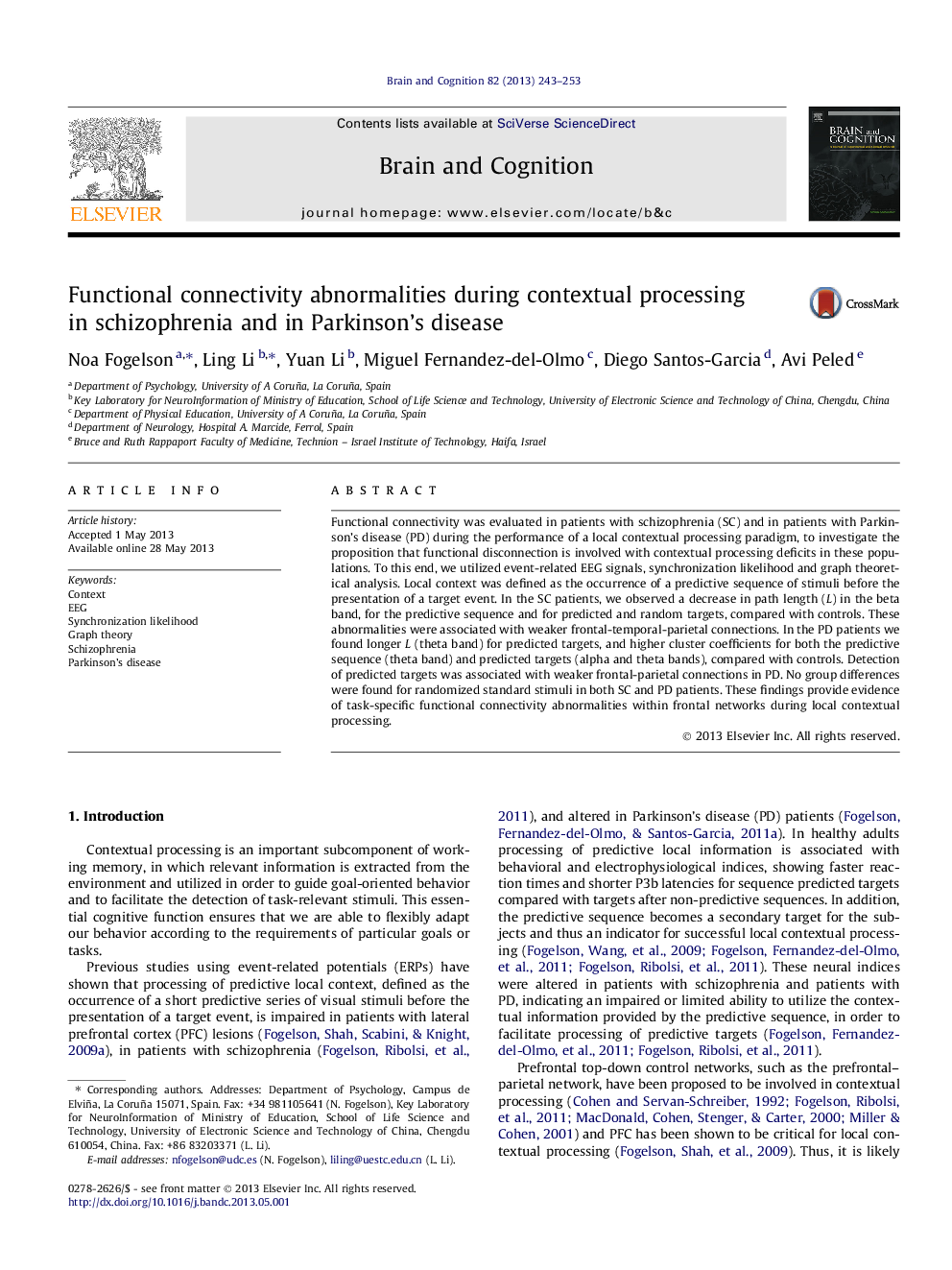| Article ID | Journal | Published Year | Pages | File Type |
|---|---|---|---|---|
| 924570 | Brain and Cognition | 2013 | 11 Pages |
•Evaluation of functional connectivity using EEG and graph theory.•Schizophrenia and PD patients perform contextual processing task.•Stimulus-specific decrease of path length in schizophrenia patients.•Context-dependent increase of path length and clustering coefficient in PD patients.•Abnormalities associated with weaker connections within frontal networks.
Functional connectivity was evaluated in patients with schizophrenia (SC) and in patients with Parkinson’s disease (PD) during the performance of a local contextual processing paradigm, to investigate the proposition that functional disconnection is involved with contextual processing deficits in these populations. To this end, we utilized event-related EEG signals, synchronization likelihood and graph theoretical analysis. Local context was defined as the occurrence of a predictive sequence of stimuli before the presentation of a target event. In the SC patients, we observed a decrease in path length (L) in the beta band, for the predictive sequence and for predicted and random targets, compared with controls. These abnormalities were associated with weaker frontal-temporal-parietal connections. In the PD patients we found longer L (theta band) for predicted targets, and higher cluster coefficients for both the predictive sequence (theta band) and predicted targets (alpha and theta bands), compared with controls. Detection of predicted targets was associated with weaker frontal-parietal connections in PD. No group differences were found for randomized standard stimuli in both SC and PD patients. These findings provide evidence of task-specific functional connectivity abnormalities within frontal networks during local contextual processing.
